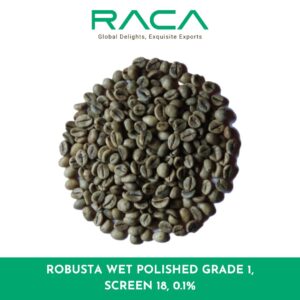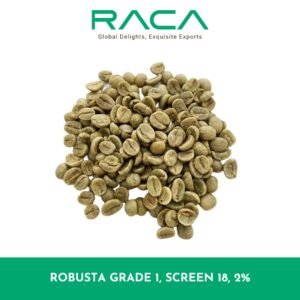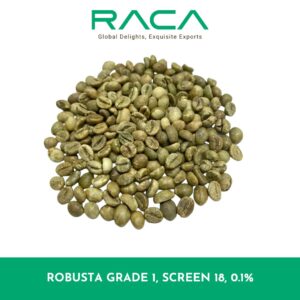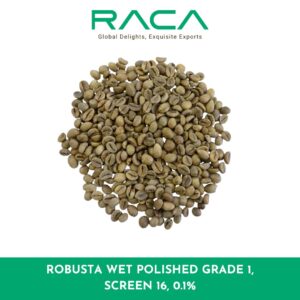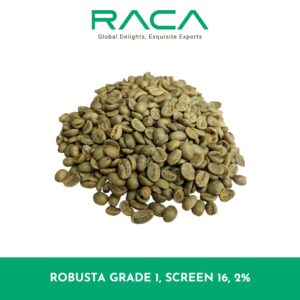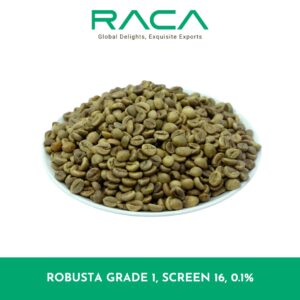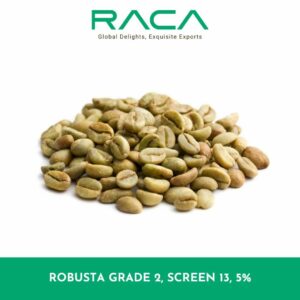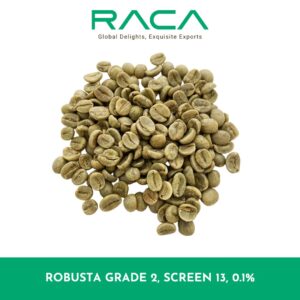Have you taken a peek at all the delicious, high-quality coffee in your local store? Chances are it’s labeled as “100% Arabica”. But what about the rest? Most likely, it’s Robusta, the other kind of commercially grown coffee beans.
Robusta coffee has a bit of an undeserved bad rap. But don’t be so quick to judge – is it really that bad? Or does Arabica just have a special something? Is it simply the case of Arabica coffee having a better PR person?
Let us explore the world of Robusta coffee in this short guide. Take a deep dive into its origin, growth process, and most importantly, its unique and delicious taste.
1. What is Robusta Coffee? How Robusta is different from Arabica?
The robusta bean, brewed in a cup or the plant itself, is such a delightful part of the Coffea canephora species, one of the two main coffee plants cultivated around the world.
The other, more widely known variety is Coffee arabica, or “Arabica” coffee.
It’s quite amazing to see how far Robusta has come in recent years! Though Arabica used to reign supreme by a wide margin—around 80/20—recently, Robusta has made quite the stir, now accounting for more than 40% of the coffee grown around the world, according to World Coffee Research.
Though Arabica coffee has often been revered for its superior flavor and quality, Robusta is no slouch! It has its own set of advantages, like being easier to grow and more resilient to diseases and drought. Plus, it contains nearly twice as much caffeine as Arabica, making it a great pick-me-up!
2. Where does Robusta Coffee originate?
It’s said that the robusta coffee variety was first discovered in the Congo back in the 1800s. This unique Coffea canephora tree is native to the lush, tropical forests surrounding Lake Victoria in Uganda.
Back in the 1900s, Robusta coffee made its way to Southeast Asia, providing much-needed relief from the devastation caused by Coffee Leaf Rust in Sri Lanka in 1869 (or 1867, as Wiki tells us). It had already struck most of the plantations in Java – Indonesia by 1876.
Robusta coffee continues to be cultivated today in Africa and across Asia, with Indonesia, India, and Vietnam in particular leading the way. Not to be outdone, Brazil produces a healthy abundance of Robusta as well!
And luckily, Robusta is hardier than its Arabica counterpart, allowing it to thrive in lower altitudes and expand its reach even further.
3. What is Robusta coffee bean’s characteristics?
Why does Robusta get such a bad rap?
It’s no surprise that coffee lovers tend to have a less-than-fond opinion of Robusta coffee – it can often have a bitter and acrid flavor, reminiscent of rubber and the most bitter of gas station coffee experiences. But don’t be so quick to write it off! Robusta coffee can have a far more pleasant taste than expected.
Robusta has a fascinating history of being grown for more practical consumption, so unfortunately it doesn’t enjoy the same refinement as Arabica. But all that doesn’t mean that we can’t find a higher quality Robusta – one that still has those mild flavor notes like lower acidity and more bitterness.
But as a blend component, more premium Robustas could truly elevate espresso to the next level. Arabica-Robusta blends are a popular choice for espresso, as Arabica beans contribute flavor and Robustas bring a delightful boost of caffeine, intensity, and crema.
Robusta Botany Characteristics
Robusta coffee is a special kind of coffee, hand-picked from the sides of the equator where the temperature is just right – between the cozy temperatures of 22-26°C. It’s grown at a perfect altitude, between 200-900m above sea level, although it can thrive even as high as 2300m. What a wonderful, hearty brew this robusta coffee brings!
Although it’s an amazing tree group, robusta coffee is usually not a great choice for those living in dry climates. They do best in areas where the rainfall ranges from 1200-2500 mm. Additionally, these particular coffee plants can struggle in colder temperatures, so it’s best to keep them in an area that’s consistently around 18-36°C.
Robusta coffee is simply remarkable – it’s resistant to rust, stem borer, and insect glands – making it standout compared to Arabica. On top of that, it’s more productive than Arabica, making it the clear choice among coffee connoisseurs. Truly, it is worthy of its name!
Characteristics of the taste of Robusta coffee
Quality
Robusta coffee is known for its unique flavor notes, ranging from neutral to a slight bitterness. While it may not boast the same level of purity and natural aroma as its Arabica counterpart, the lower price point of Robusta makes it a great option for those looking to enjoy their coffee without spending a fortune.
However, the truly remarkable characteristic of this coffee variety is its incredibly high caffeine content, a whopping 2 – 4% of coffee beans compared to the mere 1 – 3% in Arabica.
Though, when wet-processed, Robusta coffee can actually provide higher quality than regular Arabica varieties!
Taste
Robusta Cafe has a bitter taste, but the aroma is sweet and fragrant – not sour, but sweeter than Arabica. If you want to bring out the best of these two flavors, feel free to add a touch of cocoa or chocolate – the neutralizer will bring out the best of both worlds!
If you’re looking to craft your own special blend of coffee, why not try tweaking the traditional 30:40:30 formula of Arabica, Robusta, and neutral coffee or cocoa? By doing so, you can create a unique experience that’s just perfect for your own individual tastes.
4. Amazing benefits of Robusta coffee bean to health
Coffee is the beloved beverage of so many. Not only is its delicious taste a delight, but its benefits are undeniable. Caffeine, the key ingredient in coffee, has many effects on the body while the minerals and beneficial compounds provide regular coffee drinkers with a host of advantages.
These include anti-drowsiness, a refreshing feeling, more comfort, protection against cancer, and aging, and even prolonging your life. Plus, coffee can help with your beauty and weight.
While coffee can be a great addition to your daily routine, it’s important to remember to consume it in moderation – typically 2 to 3 or 5 cups a day. When overused, coffee can lead to a number of unfortunate consequences such as insomnia, the feeling of being “drunk” on coffee, phantom bars, coffee addiction, and hypertension.
5. Prices of Robusta coffee beans
Robusta coffee tends to be the more cost-effective option compared to Arabica, and there are two main reasons for this.
Firstly, Robusta coffee tends to be a bit more bitter and sadly lacks the same aromatic flavor as Arabica. On top of that, Arabica has 60% more fat and twice as much sugar as Robusta, making it a sweeter and more indulgent option.
Secondly, Robusta coffee is usually processed dry, while Arabica coffee typically undergoes wet processing, which includes fermentation to create a complex and delicious flavor.
For updates on coffee prices and market trends, please reach us here.
6. Where is the best place to buy robusta coffee beans from
It’s truly remarkable that over 70 countries from all over the world are responsible for producing the coffee beans that make up your favorite daily cup! Of those countries, five of them produce the majority of beans we all enjoy – Vietnam, Brazil, Colombia, Indonesia, and Ethiopia.
- Vietnam: They now specialize in robusta coffee, and account for an astonishing 30% of the world’s robusta coffe
- Brazil: In 150 years, Brazil produces a staggering 2,595,000 metric tons of coffee, with a specialty in the alluringly soft Arabica market.
- Colombia: Warmer temperatures and increased precipitation have caused the country to slip from its second-place spot as the world’s top coffee exporter, though it still produces an impressive 810,000 metric tons each year.
Vietnam is a remarkable country that leads the world in Robusta coffee production. It’s a breeze to order robusta coffee from Vietnam, but take the time to research suppliers for the best products for you!
You can refer to the selection of reputable robusta coffee suppliers in Vietnam here
If you are in the business of importing green coffee or if you are thinking of opening a coffee shop chain, then look no further! We provide the highest quality coffee, coupled with our expertise in selection and storage – so you can be sure of the best coffee experiences. Please don’t hesitate to get in touch for all your coffee needs.


